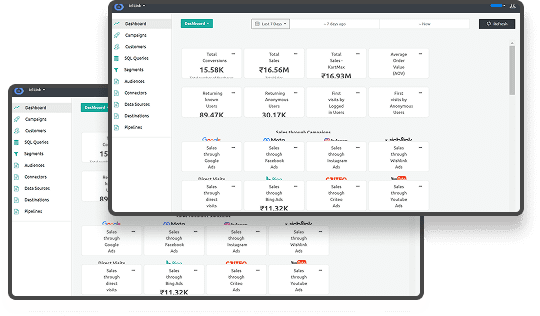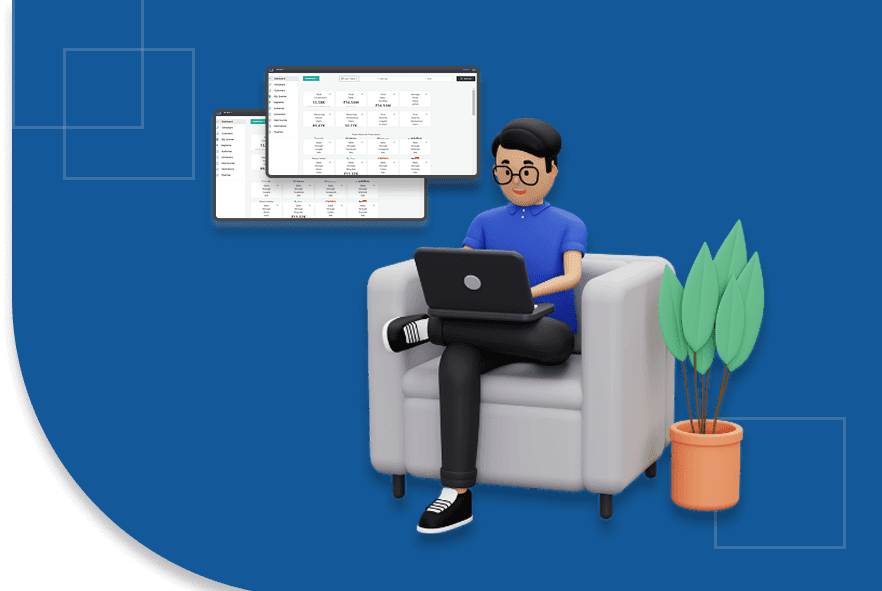Shopify Checkout Extensibility Conversion Tracking Guide
TL;DR
- Shopify Checkout Extensibility allows merchants to customize the checkout experience, improving customer behavior insights and increasing conversions.
- Conversion tracking is essential for identifying friction points, tracking key metrics (like abandonment rate, conversion rate, AOV, payment success), and optimizing the checkout process.
- Key metrics to track include checkout abandonment, conversion rate, average order value (AOV), and payment success rate to understand and boost performance.
- Optimizing checkout involves strategies like personalization, simplifying the flow, offering multiple payment options, and ensuring mobile-friendliness to reduce cart abandonment and increase revenue.
Is your Shopify store losing out on key conversion insights? Discover how Shopify Checkout Extensibility can help you track every step of the customer journey and optimize for maximum sales
Optimizing your checkout process is key to driving conversions and increasing sales. Shopify’s checkout extensibility allows merchants to customize the checkout experience and better understand customer behavior.
One of the most important aspects of this customization is conversion tracking—knowing which elements of your checkout process are working and which ones need improvement. By leveraging conversion tracking, merchants can make data-driven decisions to enhance the checkout process, reduce cart abandonment, and ultimately increase revenue.
What is Shopify Checkout Extensibility?
Shopify checkout extensibility refers to the ability to modify and enhance the default Shopify checkout process. With Shopify’s checkout extensibility features, merchants can add custom fields, integrate third-party apps, personalize the user experience, and implement advanced tracking mechanisms—all aimed at improving the conversion rate and customer satisfaction during the checkout process.
Whether you’re using Shopify Plus or other plans that offer checkout customization options, Shopify checkout extensibility provides merchants with a powerful toolset to optimize their checkout flow and create a personalized experience for customers.
Now that we understand what Shopify checkout extensibility is, let’s look into why conversion tracking is crucial for improving your checkout process.
Why is Conversion Tracking Important in Shopify Checkout Extensibility?
Conversion tracking is the backbone of any successful e-commerce strategy. It enables merchants to monitor how their customers interact with the checkout process, which elements are causing friction, and which areas need improvement. In the context of Shopify checkout extensibility, conversion tracking helps merchants identify:
- Where customers drop off in the checkout process.
- Which elements of the checkout process (like custom fields, CTAs, or payment options) lead to higher conversions?
- How well are the personalized content or recommendations performing?
- The effectiveness of third-party integrations such as loyalty programs or payment gateways.
By tracking these data points, merchants can make informed decisions to reduce cart abandonment, increase completion rates, and ultimately boost revenue.
With conversion tracking in place, it’s time to explore the specific metrics that can help you evaluate the performance of your checkout process.
Key Conversion Metrics to Track in Shopify Checkout Extensibility
There are several important metrics to track to evaluate how well your checkout process is performing:
1. Checkout Abandonment Rate
The checkout abandonment rate refers to the number of people who add items to their cart but leave before completing their purchase. High abandonment can be a sign that something in the checkout process is causing customers to give up.
By tracking this, you can identify specific points in the checkout process where customers are leaving and work to fix those areas.
2. Conversion Rate
The conversion rate is the percentage of customers who complete their purchase after entering the checkout process. It’s a key metric for understanding how successful your checkout flow is. Shopify checkout lets you easily track this rate and optimize for higher conversions.
3. Average Order Value (AOV)
Average Order Value (AOV) tracks how much, on average, a customer spends per order. You can increase AOV by offering upsells, bundles, or discounts during checkout. Tracking this helps you understand how your checkout process impacts customer spending.
4. Payment Success Rate
The payment success rate measures how many transactions go through successfully. If many customers experience issues during payment, it could be a sign that your payment gateways need attention. High payment failures can hurt your conversion rates, so tracking this metric is crucial.
5. Customer Lifetime Value (CLTV)
Customer Lifetime Value (CLTV) shows the total revenue a customer will generate during their relationship with your business. Tracking this helps you understand how your checkout process and customer acquisition strategies contribute to long-term business growth.
Now that we’ve covered why conversion tracking is important, let’s move on to how you can implement it within Shopify’s customizable checkout.
How to Implement Conversion Tracking with Shopify Checkout Extensibility
To track conversions in your Shopify store, here are the steps you should follow:
1. Integrate Conversion Tracking Tools
Shopify provides the ability to integrate Google Analytics, Facebook Pixel, and other tracking tools directly into your store. These tools allow you to measure specific actions, such as when customers enter the checkout process and when they complete their purchase.
Ingest Labs also seamlessly integrates with your Shopify store, helping you track customer behavior in real-time. Compared to these generic tools, Ingest IQ gives 100% transparency into data collection, with recording capability to audit your data. In case of privacy-blocked users, you can lean on Ingest IQ reports to get accurate insights, including Ad-blocked and privacy-blocked events.
2. Use Shopify’s Native Conversion Tracking Features
Shopify offers built-in conversion tracking features for merchants on Shopify Plus. With Shopify Plus, you can directly integrate tools like Google Analytics and Facebook Pixel into your checkout flow to track customer interactions.
3. Set Up Custom Event Tracking
You can set up custom events to track specific customer actions during checkout for more advanced tracking. For example, you can track when customers select particular payment options or apply discount codes. This helps you better understand the factors that influence conversions during checkout.
4. Run A/B Tests
A/B testing allows you to compare different checkout process versions and see which leads to better conversions. For example, you can test different CTA button placements or payment methods. Shopify checkout extensibility makes it easy to run these tests and adjust the checkout process for better results.
5. Monitor and Analyze Data
Once you have set up your tracking, it’s time to monitor and analyze the data. With Ingest Labs, you can track every stage of the checkout process in real-time. By understanding customer behavior, you can identify areas to improve the checkout experience.
6. Set Up Conversion Funnels
A conversion funnel helps you visualize the customer journey from browsing to checkout completion. Setting up a funnel allows you to track where customers are dropping off and focus on improving those steps to boost conversions.
In addition to conversion tracking, several strategies can be used to optimize your checkout process further and achieve better results.
Advanced Strategies for Optimizing Shopify Checkout Conversions
Along with conversion tracking, several strategies can help improve your Shopify checkout experience and increase conversions:
1. Personalization
Personalizing the checkout experience can help increase conversions. Using customer data, you can offer personalized discounts or recommend products based on what customers have browsed or purchased.
Ingest Labs helps you track customer behavior and create personalized checkout experiences based on their preferences, which can improve engagement and conversions.
2. Offer Multiple Payment Options
Providing multiple payment options makes it easier for customers to complete their purchases. Shopify checkout extensibility allows you to add payment methods such as credit cards, PayPal, Google Pay, and Apple Pay. Offering flexible payment methods reduces friction and improves conversion rates.
3. Simplify the Checkout Flow
A complex checkout process can lead to high abandonment rates. By reducing the number of steps in your checkout process, simplifying forms, and removing unnecessary fields, you can make it easier for customers to complete their purchases.
4. Optimize for Mobile
Many shoppers now buy from their phones, so ensuring your checkout process is mobile-friendly is important. Shopify checkout extensibility ensures that your checkout process is responsive, but you can further optimize it by simplifying the process and offering mobile payment options like Apple Pay.
Let’s explore how Ingest Labs can enhance your Shopify checkout process by providing real-time insights and valuable tools for improvement.
How Ingest Labs Enhances Shopify Checkout Extensibility
Ingest Labs provides tools that help merchants optimize their Shopify checkout process, track customer behavior, and boost conversion rates. Here are the key features Ingest Labs offers to improve your checkout experience:
1. Real-Time Customer Insights
Ingest Labs gives real-time tracking, helping you understand how customers interact with each stage of the checkout process. You can identify where drop-offs occur and quickly make adjustments to improve the user experience.
2. Personalized Checkout Experiences
By leveraging customer data, Ingest Labs allows you to personalize the checkout for different customer segments. This could include offering targeted discounts, loyalty rewards, or product recommendations, ultimately improving AOV (Average Order Value) and CLTV (Customer Lifetime Value).
3. Advanced Segmentation for Targeted Campaigns
Ingest Labs enables you to create customer segments based on behaviors like cart items or payment preferences. Tailored messaging increases conversion rates and improves customer loyalty.
4. Comprehensive Data Tracking and Reporting
Gain insights with detailed conversion rates, abandonment rates, and payment success rates. Ingest Labs allows you to analyze this data to improve checkout and streamline pain points.
5. Integration with Shopify Apps
Ingest Labs integrates smoothly with Shopify apps like payment gateways and loyalty programs, enhancing the checkout process and customer experience.
6. Custom Event Tracking for Checkout Optimization
Track specific checkout actions such as clicking payment options or applying discount codes. Ingest Labs’ custom event tracking helps you understand customer preferences and optimize accordingly.
7. Seamless Checkout Customization
Enhance Shopify checkout extensibility by customizing fields, adding personalized messages, or making interactive elements, creating a tailored checkout experience that meets your customers' needs.
By using Ingest Labs, you can track customer behavior in real-time, personalize the checkout experience, and continuously optimize the process for maximum conversion.
Conclusion
Shopify checkout extensibility allows merchants to customize their checkout process, improve user experience, and enhance conversion tracking. By implementing conversion tracking, A/B testing, and integrating third-party apps, merchants can create a streamlined and personalized checkout experience that reduces cart abandonment and increases revenue.
Ingest Labs provides the tools to analyze real-time customer data, personalize the checkout experience, and continuously optimize for better performance. You can make informed decisions to improve your Shopify checkout and boost conversions using data-driven insights.
Ready to optimize your Shopify checkout process and drive better results? Contact us today to learn how Ingest Labs can help you create a high-converting, personalized Shopify checkout experience.
FAQ
1 How to enable checkout extensibility on Shopify?
Enable checkout extensibility by going to "Settings" > "Checkout" in your Shopify admin panel. Shopify Plus users get more customization options.
2 Does Shopify still work in 2025?
Yes, Shopify remains a leading e-commerce platform in 2025 with ongoing updates and features.
3 What are the changes in Google Analytics 2025?
Google Analytics 2025 has fully transitioned to GA4, focusing on event-based tracking, cross-platform insights, and enhanced privacy features.
4 Do Shopify scripts work with checkout extensibility?
No, Shopify scripts are not compatible with checkout extensibility, as the platform now uses an API-driven system for checkout customization.
5 Is checkout extensibility only for Shopify Plus?
Checkout extensibility is mainly available for Shopify Plus, offering full customization options, though some features may be accessible on other plans.
6 What is replacing Shopify scripts?
Shopify scripts are being replaced by Shopify Functions, an API-driven system offering more flexibility for checkout logic like discounts and payment methods.





